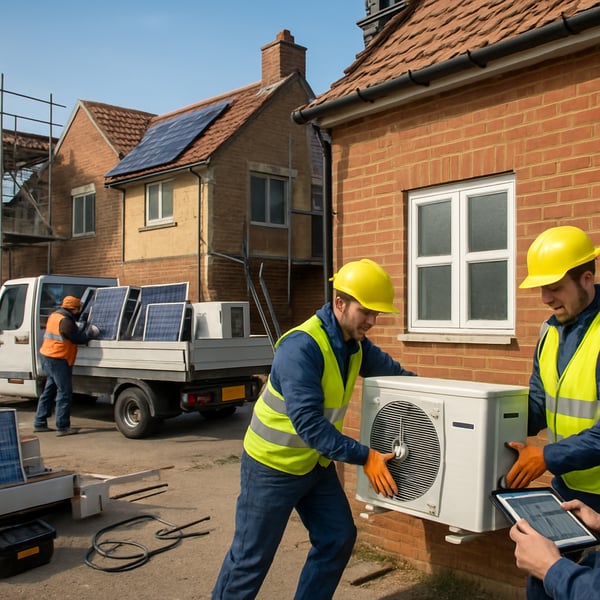The shift from ECO4 to the Warm Homes Plan means that installers need to understand not only policy, but also what homeowners actually want.
If you’re planning to sell direct to households in the able‑to‑pay market, the data below will help you speak their language.
Why people want solar panels
A representative YouGov survey for the Energy Saving Trust (May 2025) sheds light on what motivates British homeowners:
-
Lower energy bills – 71 % of respondents said saving money was the main reason to go. In Manchester, for example, households could save around £360 a year
-
Environmental impact – over half (56 %) of 18–24‑year‑olds see cutting emissions as a key motivator, while only 37 % of those aged 55+ say the same. That generational gap suggests environmental messaging resonates strongly with younger homeowners.
-
Battery interest – 46 % would like to add a battery if money were no. Offering battery‑ready packages can therefore open a second revenue stream.
However, there are barriers:
-
Cost concerns – 44 % of people who have not considered solar say it’s too expensive, and 38 % say it isn’t a financial priority right now.
-
Trust issues – 61 % worry about the trustworthiness of offers and quotes. Retired people are even more cautious, with 73 % reporting concerns. Transparency and evidence of certifications are, therefore, critical.
-
Effectiveness – nearly one-third of respondents either doubt that solar works well or aren’t sure. Education on real‑world performance is still needed.
Heat pump perceptions and experiences
Heat pumps remain essential to the UK’s net‑zero plans and to the Warm Homes Plan.
Nesta’s large‑scale surveys reveal what owners and potential buyers care about:
High satisfaction rates: 81 % of heat‑pump owners are as satisfied or more satisfied with their system compared with their previous heating. Even owners of older properties report similar satisfaction levels (83 %).
Running cost satisfaction: 67 % of heat‑pump owners are happy with running costs and satisfaction is highest among those switching from electric, oil or LPG.
Noise is not a major issue – 85 % of heat‑pump owners say noise levels are unobtrusive, contradicting a common misconception.
Homeowner questions – Nesta’s data‑driven FAQs show that people want clear answers about eligibility, grants, installer trustworthiness and radiator upgrades. Addressing these in your marketing can build confidence.
But there are challenges:
-
Customer misconceptions – A 2024 Heatly survey of installers found that 72 % report homeowners believe heat pumps only work in new builds and over 60 % say customers fear heat pumps are expensive to run. This underscores the need for evidence‑based messaging.
-
Over‑sizing and design issues – More than 50 % of installers cited over‑sizing as the biggest problem, and one third reported mismatched heat‑loss calculations. Demonstrating competence in system design can differentiate your business.
-
Administrative burden – Nesta reports that 19 % of heat‑pump installers feel administrative tasks and unnecessary paperwork are the biggest barrier to scaling. Streamlined processes and digital tools can improve customer experience and profitability.
What this means for installers
-
Lead with value, not just technology. The top motivator for solar adoption is saving money, so clearly demonstrate bill savings and payback periods. For heat pumps, emphasise comfort and running‑cost satisfaction.
-
Build trust. Highlight your MCS certification, offer case studies and encourage peer referrals. Since 61 % of solar‑curious consumers worry about scams, transparency is your friend.
-
Educate to overcome myths. Use case studies, blog posts, FAQs and social media to tackle misconceptions about noise, property suitability and running costs.
-
Offer battery‑ready and hybrid options. Nearly half of the respondents are interested in battery storage. Bundling batteries with solar or heat pumps can increase average order value and meet emerging demand.
-
Make the process simple. Streamline paperwork and network approvals, and provide clear steps from enquiry to installation. Remember that 19 % of installers cite admin tasks as their biggest bottleneck; your customers feel that friction too.
By aligning your messaging and services with what homeowners value and fear, you can build trust and unlock able‑to‑pay demand. For help translating these insights into your marketing and customer journey, the Elcap team is here to support.



